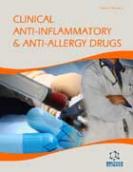Abstract
Periodontitis is an infectious and inflammatory disease where specific dental plaque pathogens are associated with the onset and severity of tissue destruction. Photodynamic therapy (PDT) has been proposed as a novel disinfection method, which may be a potential treatment for several infectious diseases by eradicating microorganisms. Due to the high antibacterial potential, PDT has been proposed as a beneficial tool in the treatment of chronic periodontitis and peri-implantitis, particularly in elimination of subgingival pathogens from areas such as deep pockets, root concavities, and furcations. Positive effects of adjunctive PDT have been reported on the clinical, biochemical and microbiologic parameters. However, the superiority of PDT in the treatment of periodontitis and periimplantitis compared to scaling and root planing alone or as an adjunct is still unclear. So far, there is no standard PDT protocol to be used in periodontal treatment. Larger scale randomized clinical studies with longer follow-up periods are required to better understand the potential of PDT in the treatment of periodontitis and peri-implantitis. Furthermore, possible role of various confounders such as smoking and diabetes mellitus or targeting the mechanically inaccessible areas such as deep pockets and furcations should be examined in future studies.
Keywords: Photodynamic therapy, periodontitis, peri-implantitis, non-surgical periodontal therapy.
Graphical Abstract
 33
33

